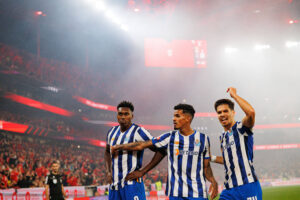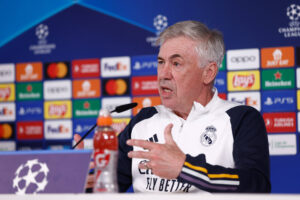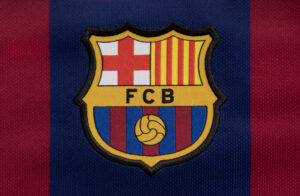Famous Five: with Nemanja Matic set to return to Chelsea this weekend with Manchester United, we look at five other football transfers that have rebounded horribly on the selling club.
Phil Neville, for one, is in no doubt as to why Chelsea have so far struggled this season after their comprehensive title win last year. As he said on the BBC this week, “What’s gone wrong for Chelsea? One word. Matic. It’s as simple as that…Whoever made that decision to sell him needs sacking. That is one of the poorest decisions I have ever seen in the Premier League.”
Of course, the season is still relatively young and Tiémoué Bakayoko, once he is fully fit, may yet regain the stunning form he showed at Monaco last season. This led to Chelsea signing him and allowing Nemanja Matic to rejoin Jose Mourinho at Manchester United. However, if Neville is right and Chelsea’s current problems are solely down to the sale of Matic, then his transfer could go down as one of the worst in football history, never mind Premier League history.
Here are five terrible transfers that the selling clubs still regret to this day.
Five Terrible Transfers From Football History
Robin van Persie (from Arsenal to Manchester United in 2012 for £22.5 Million)
It is now undeniable that Arsenal have endured a decade (indeed, even more than a decade) of drift under Arsene Wenger, effectively since the club moved from Highbury to the Emirates Stadium in 2006.
After going nine years without a trophy of any kind, Arsenal might have won three FA Cups in four seasons, but the club has not sustained a serious title challenge (i.e. one that goes on at least until March) in 13 seasons, since the long-gone glory days of “the Invincibles”.
It is arguable that ever since David Dein left in 2007, Arsene Wenger has been doing the job of both manager and CEO (whatever the official job title of Ivan Gazidis) and as a result he has often neglected to strengthen the team because he has been focusing on off-field issues.
There have been several clear examples of that, but probably the most glaringly obvious was the sale of Robin van Persie, who at the time was not only the club captain, but its star striker, to Manchester United in the summer of 2012.
More than five years on, many Arsenal fans have still not forgiven Wenger, seeing the RVP sale to United as the final nail in his coffin as a serious, title-challenging manager.
Indeed, some have even joked that the transfer was Wenger’s parting gift to his old rival, Sir Alex Ferguson, before he retired from the game, as van Persie scored the goals that led Ferguson’s United to their thirteenth league title before Ferguson shocked the football world (and, apparently, van Persie himself) by retiring at the end of the 2012/13 season.
What makes the situation even worse for Arsenal fans is that they fear a repeat, or “RVP II”, with Alexis Sanchez moving to Manchester City at the end of this season, and worse still for free, when his Arsenal contract expires.
If that happens, it will evoke all the old, painful memories of the van Persie transfer and perhaps finally signal the end for Arsenal’s greatest modern manager.
Sol Campbell (from Tottenham to Arsenal in 2001 on a Free Transfer)
Sometimes a club has no say in where its players end up, especially if a player sees out their contract and moves on a free transfer, as might be the case with both Alexis Sanchez and Mesut Özil at the end of this season.
However, even if Arsenal’s two current stars end up leaving the club for nothing, theirs will not be the most famous free transfers in the history of football. The most famous free transfer of them all, without doubt, remains that of Sol Campbell from Tottenham to Arsenal in 2001.
More than 16 years on from Campbell’s “treacherous” transfer (as Spurs fans still regard it), it is easy to forget just how significant his move to Arsenal was.
It could be argued that it was the single most important acquisition that Arsene Wenger has ever made in his time at Arsenal, for the simple reason that Campbell is the only truly great defender that Arsenal have signed in Wenger’s two decades-plus at the club.
The other stalwarts of the “Invincibles” team – Henry, Bergkamp, Vieira, Pires et al – were not only attackers but had already been at the club for several years before Campbell signed.
Indeed, between 1999 and 2001, when Arsenal already had all those star forwards and midfielders, the best that they could manage in the league was to finish runners-up three times in a row to a rampant Manchester United, in addition to losing two major cup finals (the 2000 UEFA Cup final to Galatasary and the 2001 FA Cup Final to Liverpool).
It is in that context that the signing of Sol Campbell was so important. At his best, as he was between 2001 and 2005, he was virtually a one-man defence, possessing both the stature of a centre-back and the speed of a full-back.
It was his addition to Wenger’s “All-Stars” that finally transformed them into a title-winning side in 2002 and 2004 (and they really should have made it a hat-trick of titles by winning in 2003).
It is for that reason that Campbell still remains so loathed at White Hart Lane and why, if Arsenal are going to erect yet another statue to their former greats, he should be the first name on the sculptor’s list.
Luis Figo (from Barcelona to Real Madrid in 2000 for 60 Million Euros)
Perhaps Arsene Wenger (or David Dein, who is strongly rumoured to have been the man responsible for the Sol Campbell transfer) first got the idea of poaching their hated rival’s best player in the summer of 2000, when Luis Figo completed the most acrimonious transfer of the new millennium from Barcelona to Real Madrid.
A few other players, even a few other star players, had moved between the two giants of Spanish football before, including Bernd Schuster and Luis Enrique, but whatever bad feelings those moves created were as nothing to the sheer hatred (no other word will do) engendered by the Portuguese winger’s transfer from the Nou Camp to the Bernabeu.
Earlier that summer, Figo had starred for Portugal at Euro 2000, when they reached the semi-finals before losing controversially to the eventual winners of the tournament, France.
In Belgium and Holland, where the tournament had been staged, Figo had proved beyond doubt that he was one of the greatest players of his generation, having excelled on the international stage for the first time after five years of stunning club performances for Barcelona, who he had joined from Sporting Lisbon in 1995.
Consequently, it was fully expected in Catalonia that he would return to Barcelona to spearhead their attempt to dethrone Real Madrid, who at the time were the reigning European champions.
Instead, of course, Florentino Pérez, the Real Madrid President, engineered the second most controversial transfer in Spanish football history. Figo was actually the first of Pérez’s so-called “Galacticos”, the superstar players who he hoped would take Real back to the glory days of the 1950s, when the club won the first five European Cups in a row.
He was quickly followed by Zinedine Zidane (in 2001), the original Brazilian Ronaldo (in 2002) and David Beckham (in 2003). Of all of them, however, it was probably the acquisition of Figo that gave Pérez and the Madridistas the greatest pleasure, precisely because he had been stolen away from their greatest rivals.
Andy Cole (from Newcastle United to Manchester United in 1995 for £7 Million)
Not all of these spectacular transfers, which were celebrated by the buying club and bemoaned by the sellers, worked out initially. The best example of that is the transfer of Andy Cole from Newcastle United to Manchester United in January 1995.
For the first few months of his Manchester United career, Cole looked as if he might follow the likes of Garry Birtles and Peter Davenport by becoming a big-name, big-fee striker who simply couldn’t cut it on the Old Trafford stage, and some United fans even blamed him for their losing the 1994/95 Premier League title to Blackburn.
Some six years later, however, when Cole left Manchester United for Blackburn, he did so as one of the Red Devils’ greatest strikers and arguably the man who did more than anyone else (certainly more than any of United’s other strikers) to win the Treble in 1999.
And Newcastle United fans were still crying into their “Newcy Brown Ale” at the loss of the man who they had hoped would take them to their first English title for nearly seventy years.
Cole had actually begun his career at Arsenal, for whom he made just a single first-team appearance before the then manager, George Graham, made one of his biggest mistakes while in charge of the club (other than taking a bung, of course) by allowing him to move to Bristol City.
From there, Cole had moved to Newcastle United in 1993 and under Kevin Keegan, who of course had been a great striker himself, Cole spearheaded the Toon Army team that first won promotion back to the Premier League and then threatened to win the title.
However, that all changed when, barely 18 months into his Newcastle career, Cole was sold to Manchester United for £7 million (£6 million cash and the £1 million-rated winger Keith Gillespie).
Initially it did not work out for Cole at Old Trafford and the following season it seemed as if things might get even worse, as Newcastle United, not Manchester United, steamed ahead at the top of the Premier League, with Cole’s replacement, Les Ferdinand, starring at centre-forward.
Of course, what followed was football history, as Manchester United, inspired by both Cole and Eric Cantona, came storming back to win the title by a point. Although many Newcastle fans blamed their porous defence rather than the loss of Cole for their failure to win the title, the fact that Cole went on to win four more titles and a European Cup in his time at Old Trafford ultimately proved how wrong Kevin Keegan had been to sell him.
Alfredo Di Stefano (Real Madrid buying out Barcelona’s ‘half-share’ of him in 1954)
Alfredo Di Stefano is arguably the greatest footballer ever, edging out even his great compatriots Diego Maradona and Leonel Messi. Bill Shankly, for one, certainly thought he was incomparable, memorably saying of the great Argentine playmaker, “Pele is the first violinist; Di Stefano is the whole orchestra”.
What is unarguable is that Di Stefano had what Americans would call the most storied (i.e. memorable) career of any truly great player. First, he starred for the legendary River Plate side that emerged at the end of the 1940s, the one period of football history when South American club football had a higher profile than European club football, which had been decimated, like the rest of Europe, by World War Two; then he controversially moved to the aptly named Millionarios of Bogota, as part of the “rebel” Colombian league that broke away from FIFA and was consequently free to sign some of the world’s greatest stars; and finally, at the end of his career, when he was back in South America for a promotional tour with Real Madrid, he was kidnapped by Venezuelan revolutionaries, simply so their leader could meet the legendary Di Stefano.
However, despite all those other extraordinary incidents and stories, the most remarkable story about Di Stefano bar none was what is still referred to in Spain simply as “The Transfer”.
The transfer in question was Di Stefano’s move from Millionarios to Spain in 1953, as the Colombian league was gradually reconciled with FIFA and consequently lost most of its star imports.
The problem was that Di Stefano, or rather Di Stefano and his agent (or the man claiming to be his agent), signed not with one club but with two – the two biggest clubs in Spain, Real Madrid and Barcelona. In the murky, confusing world of post-war football, particularly in Spain where General Franco still ruled as the last Fascist dictator in Europe, it appeared that Di Stefano had genuinely signed contracts with both clubs and consequently the Spanish FA had to intervene.
It came up with the extraordinary, indeed King Solomon-style, solution that the two great rivals would share Di Stefano, with the Argentine playing one season in Madrid and the next one in Barcelona, and so on. Barcelona baulked at this arrangement and consequently allowed Real to buy out its ‘half-share’ in Di Stefano, allowing Los Blancos to acquire the player completely.
The rest of course is history, and not just football history but actual world history. Di Stefano transformed Real Madrid first into the best team in Spain and then, with the advent of the newly formed European Cup, the best team in Europe and indeed the world, as General Franco (who many Barca fans still believe personally intervened to secure Di Stefano’s services for his favourite club) used Real in general and Di Stefano in particular as the outwardly attractive face of his Fascistic Spain.
To this day, indeed perhaps especially today when Catalonia is claiming independence from Spain and its political leaders are being locked up as a result, “The Transfer” continues to reverberate in Spain as the single most controversial move of any player in football history, one that the “buying” club, Real, regard as the turning point in their fortunes and the “selling” club, Barcelona, still bitterly regret.
Main Photo






